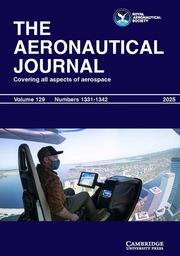No CrossRef data available.
Article contents
Study on the dynamic modelling method of a coilable mast based on hinge equivalent rotational stiffness identification
Published online by Cambridge University Press: 16 June 2025
Abstract
With numerous applications of coilable masts in high-precision space application scenarios, there are also greater demands on the accuracy of their dynamic modelling and analysis. The modelling of hinges is a critical issue in the dynamic modelling of coilable masts, which significantly affects the accuracy of the dynamic response analysis. For coilable masts, the rotational effect is the most important problem in hinge modelling. However, few studies have focused on this topic. To address this problem, the concept of hinge equivalent rotational stiffness is proposed in this paper to describe the rotational effect of the coilable mast hinges. After that, a new coilable mast dynamic model containing the undetermined hinge equivalent rotational stiffness is introduced, and an identification method for the hinge equivalent rotational stiffness based on the hammer test is proposed. Finally, the dynamic modelling method is validated through an actual coilable mast example, and the analysis and test results show that the accuracy of the dynamic model established by the proposed method in this paper is greater than that of the traditional model.
Information
- Type
- Research Article
- Information
- Copyright
- © The Author(s), 2025. Published by Cambridge University Press on behalf of Royal Aeronautical Society


